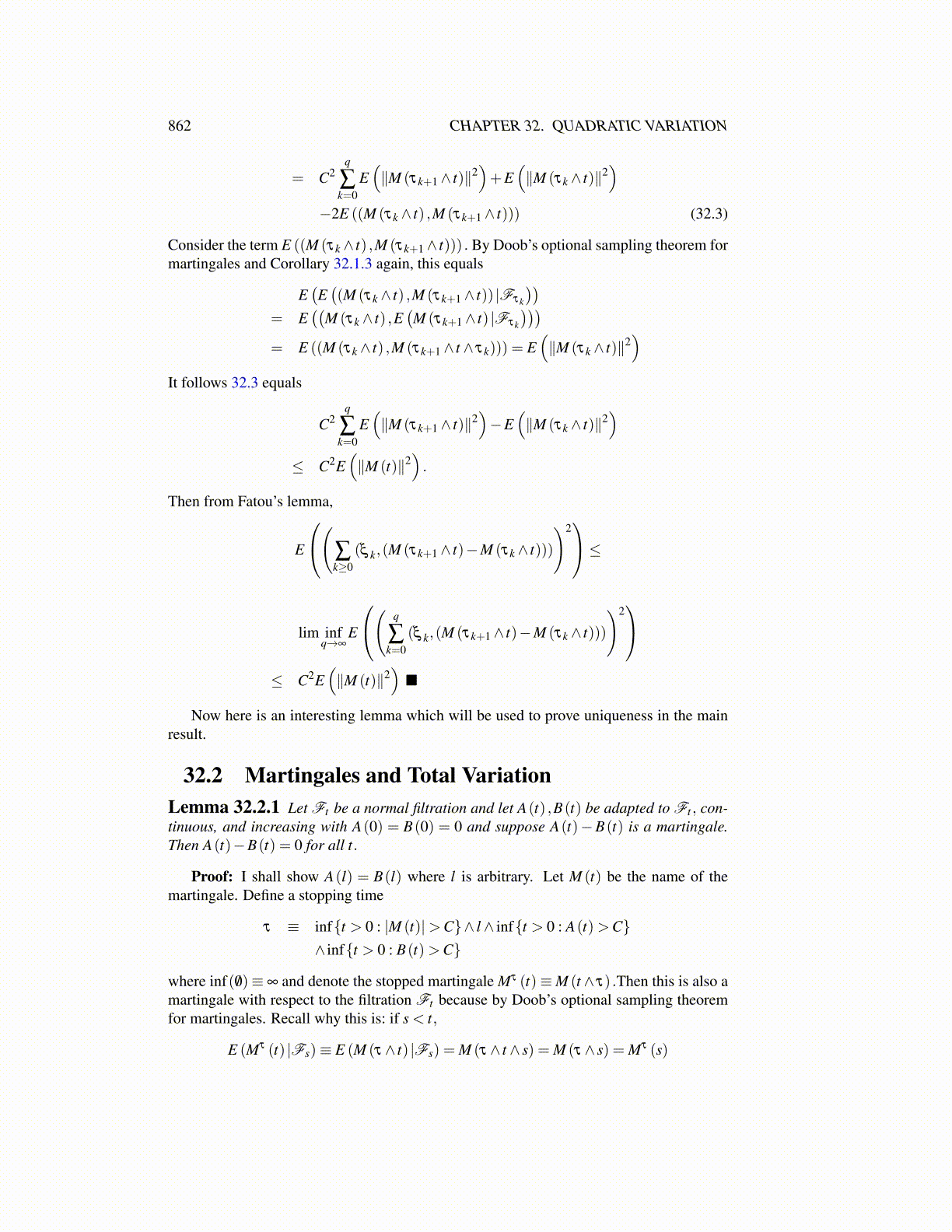
862 CHAPTER 32. QUADRATIC VARIATION
= C2q
∑k=0
E(∥M (τk+1∧ t)∥2
)+E
(∥M (τk ∧ t)∥2
)−2E ((M (τk ∧ t) ,M (τk+1∧ t))) (32.3)
Consider the term E ((M (τk ∧ t) ,M (τk+1∧ t))) . By Doob’s optional sampling theorem formartingales and Corollary 32.1.3 again, this equals
E(E((M (τk ∧ t) ,M (τk+1∧ t)) |Fτk
))= E
((M (τk ∧ t) ,E
(M (τk+1∧ t) |Fτk
)))= E ((M (τk ∧ t) ,M (τk+1∧ t ∧ τk))) = E
(∥M (τk ∧ t)∥2
)It follows 32.3 equals
C2q
∑k=0
E(∥M (τk+1∧ t)∥2
)−E
(∥M (τk ∧ t)∥2
)≤ C2E
(∥M (t)∥2
).
Then from Fatou’s lemma,
E
(∑k≥0
(ξ k,(M (τk+1∧ t)−M (τk ∧ t)))
)2≤
lim infq→∞
E
( q
∑k=0
(ξ k,(M (τk+1∧ t)−M (τk ∧ t)))
)2
≤ C2E(∥M (t)∥2
)■
Now here is an interesting lemma which will be used to prove uniqueness in the mainresult.
32.2 Martingales and Total VariationLemma 32.2.1 Let Ft be a normal filtration and let A(t) ,B(t) be adapted to Ft , con-tinuous, and increasing with A(0) = B(0) = 0 and suppose A(t)−B(t) is a martingale.Then A(t)−B(t) = 0 for all t.
Proof: I shall show A(l) = B(l) where l is arbitrary. Let M (t) be the name of themartingale. Define a stopping time
τ ≡ inf{t > 0 : |M (t)|>C}∧ l∧ inf{t > 0 : A(t)>C}∧ inf{t > 0 : B(t)>C}
where inf( /0)≡ ∞ and denote the stopped martingale Mτ (t)≡M (t ∧ τ) .Then this is also amartingale with respect to the filtration Ft because by Doob’s optional sampling theoremfor martingales. Recall why this is: if s < t,
E (Mτ (t) |Fs)≡ E (M (τ ∧ t) |Fs) = M (τ ∧ t ∧ s) = M (τ ∧ s) = Mτ (s)